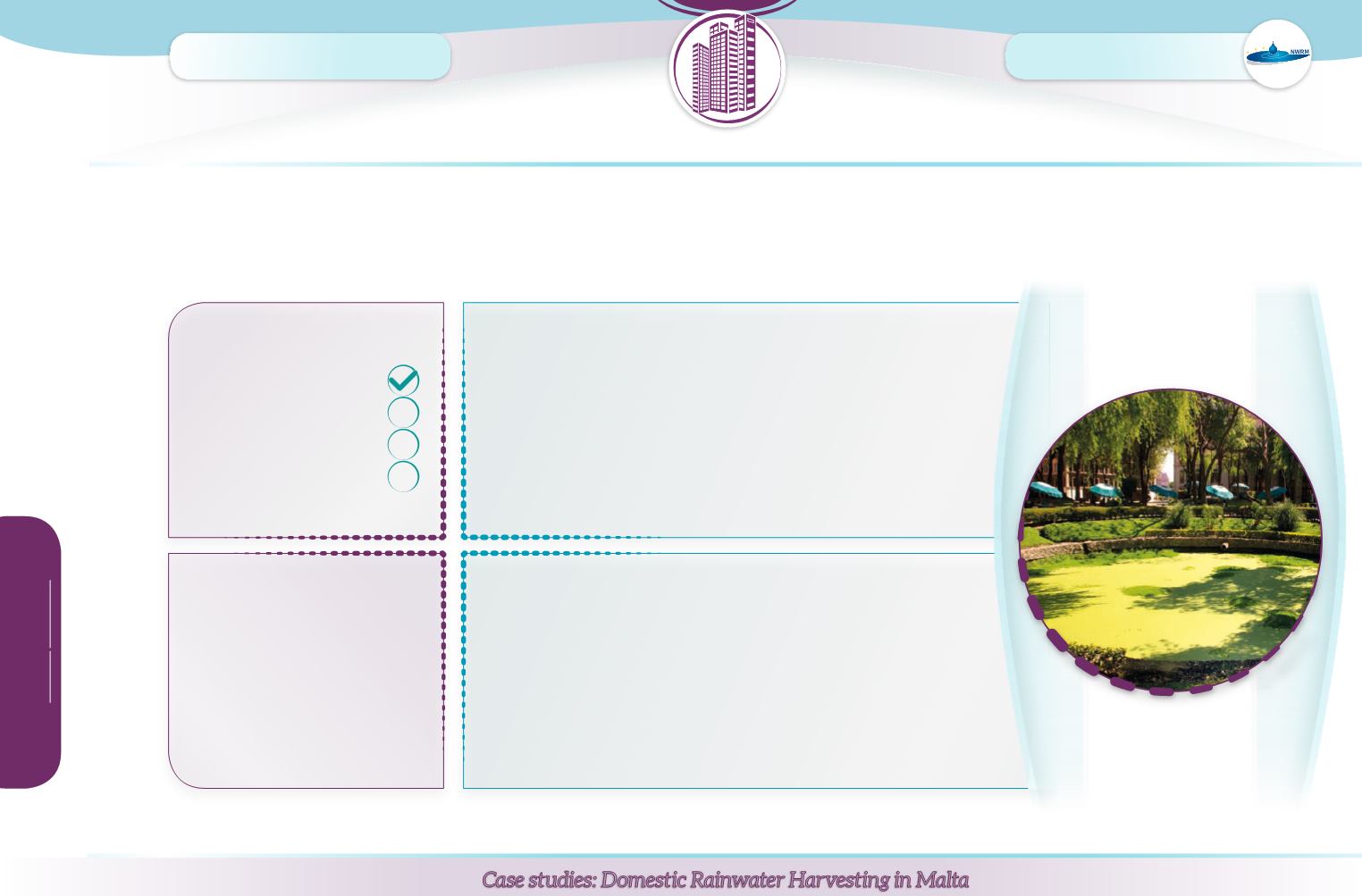
URBAN
Project funded
by theEU–DGEnvironment
L
andsurfacerelevant
forapplication
Artificial surface
Agriculture land
Forest and semi-natural areas
Wetlands
F
inancialcosts
(C
apital
,
operation
&
maintenance
)
A storage tank can generally be situated on the same land from which it takes its
stormwater, thus no further land acquisition is expected to be necessary.While a
simple water butt is low cost, the capital cost range is
considerable
depending
on the system design and how it is incorporated into the building structure, from
€5 to €60/m² roof area services. Maintenance costs are low: €0.25-€1.00 /m²
roof area services.
D
esign
Rainwater harvesting can be used in a sustainable drainage system train, e.g.
downstream of green roofs and in conjunction with other
SuDSmeasures
. The
dimensions of rainwater harvesting must consider whether the system is solely
designed to provide water supply, or whether
additional capacity
will be
included to store runoff. Regular
inspection and maintenance
(tank, inlets
and outlets, pumps and treatment filters, roof / drainage area filters...) is essential
for systems to ensure effective ongoing operation.
S
cale
The contributing area to a rainwater
harvesting system will generally be a
single roof.
Rainwater harvesting involves
collecting and storing rainwater
at source for subsequent use, for example, using water butts or larger storage tanks.Water
butts are the most widely applied and simple rainwater harvesting technique, collecting rainwater runoff from roofs via a connection to the roof down-pipe. They
are primarily designed for
small scale use
such as in household gardens, although a range of non-potable uses is possible.
Case studies:
inMalta
©
T
a
l
e
n
t
o
T
e
c


